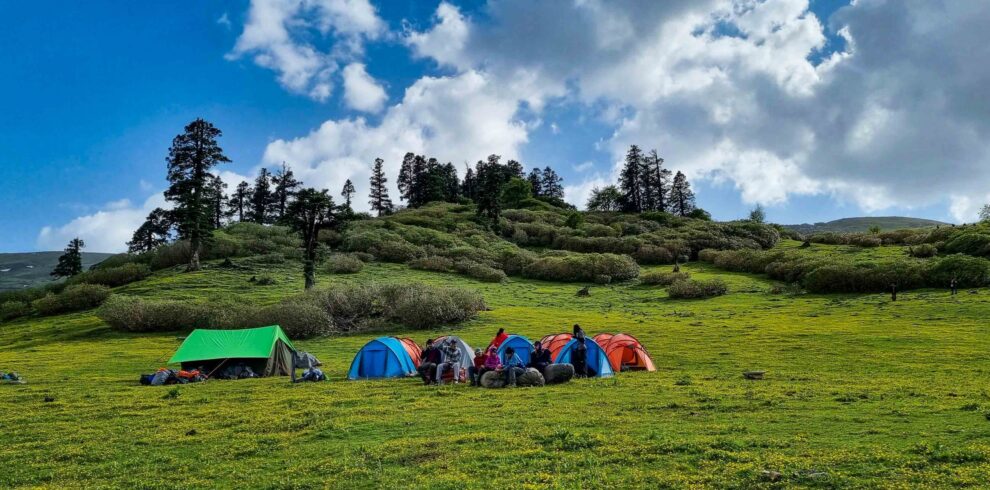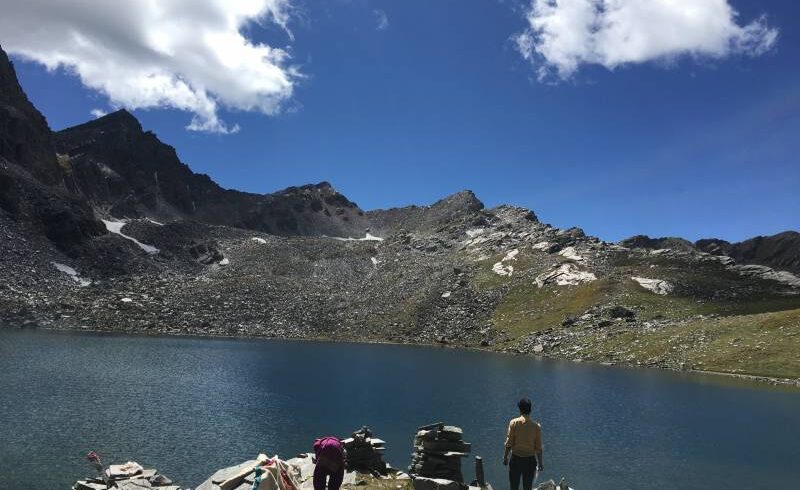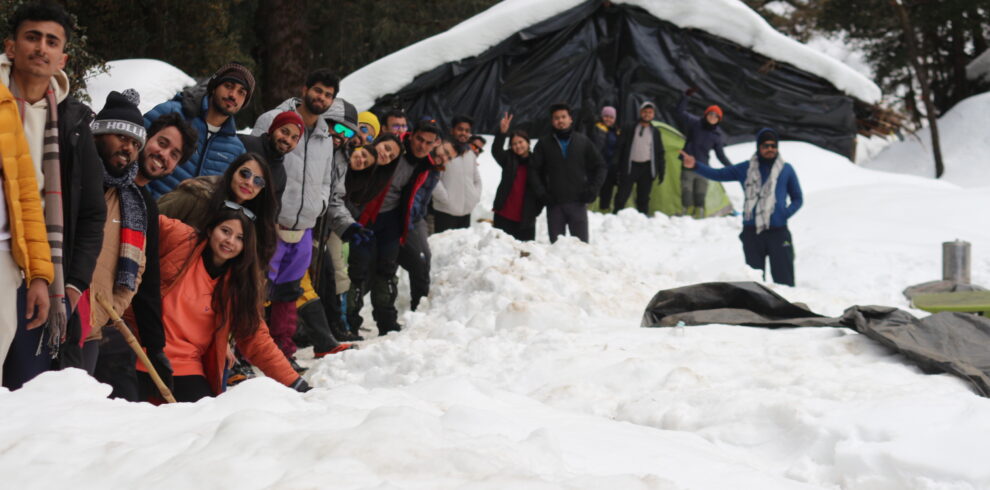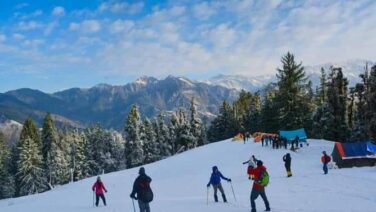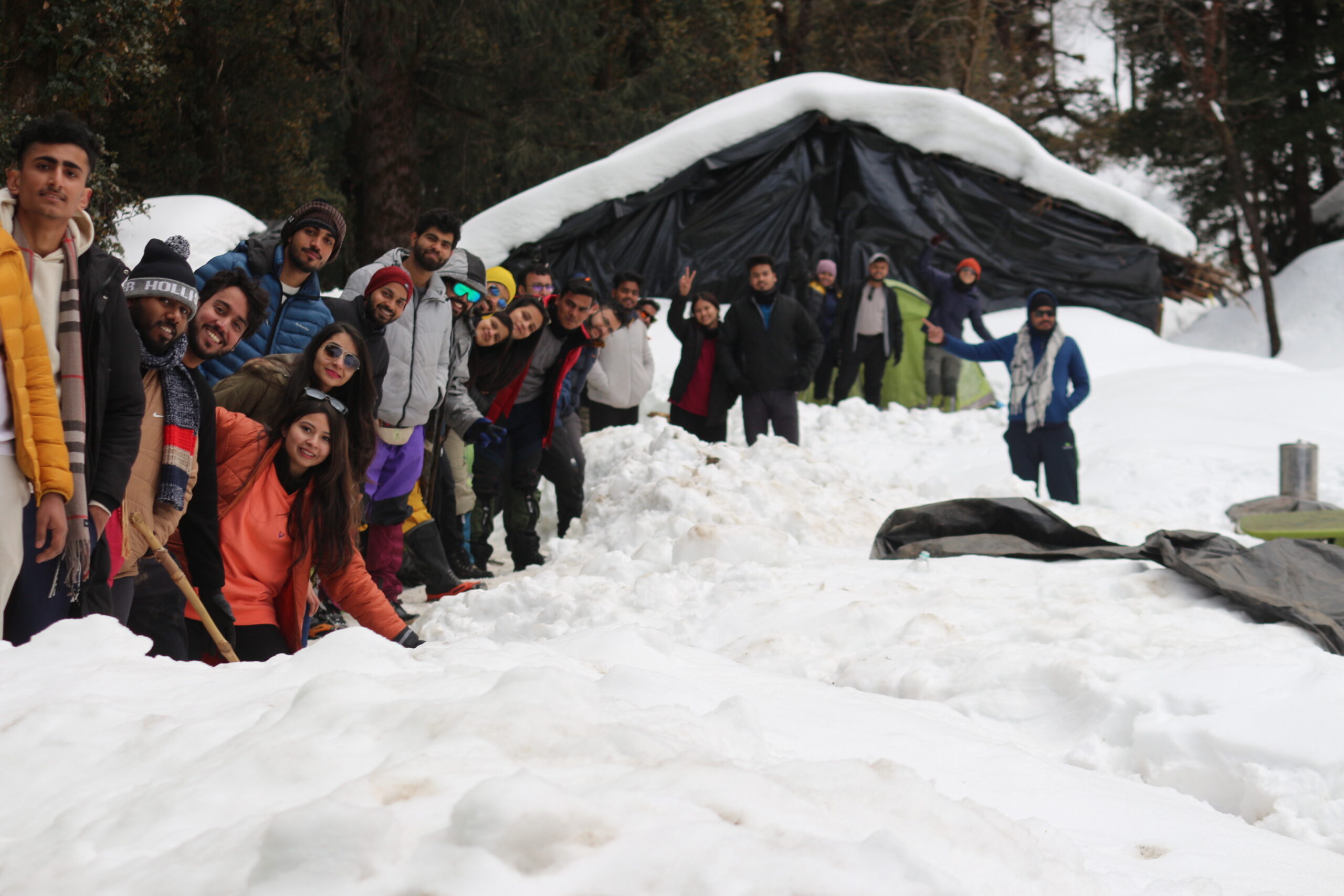7D/6N
Dehradun
MobiKwik Deal:
Get Upto ₹1000 cashback when you pay with MobiKwik! View TnC
Meals Included
Guide
Safe
Har Ki Dun Trek Highlights
- Trek to an elevation of up to 12,000 ft. above sea level as you take in the fascinating views of Swargarohini group of peaks.
- Experience the oldest trek route of the Himalayas and witness the Beautiful ancient culture, mountain views, forests, grasslands, meadows, rivers, streams and even an alpine lake.
- Trail on the same route taken by the Pandavas in the Mahabharata on their ascent to heaven.
- Get a chance to explore ancient villages that are 2,000 years old and get fascinated by small slice of the local life.
- Enjoy the mystical and exotic flora and fauna of the Himalayas and listen to the mind blowing stories about Swargarohini Peak I,II,III,IV -bears bequest of the mythical stairway to heaven
Overview
Nestled cozily on the hinges of the Gharwal Himalayas, Har ki dun trek is one of the most popular treks among a lot of trekkers and nature enthusiasts. This exhilarating trek is also known as a hanging valley because of its cradle-shaped mountains.
It is also known as the winter-wonderland as in winter the trails are totally covered with snow and the sun throw its rays within the clouds. The Har ki Dun trekking is embraced with soothing sights of deodar trees that will definitely enchant your soul with the pine smell.
Har Ki Doon Trek Quick facts:
Duration: 7D/6N
Maximum altitude: 11,675 ft
Har Ki Dun Trek Difficulty Level: Easy to Moderate
Har Ki Dun Trek Distance: 47 KM
Temperature: 10℃ to 15℃ during the day and 2℃ to -5℃ during the night
Best Time to do Har ki Dun Trek: April to Mid-June and October to Mid-November
ATM: Purola has the last ATM before your trek begins
Start/End Point of the trek: Sankri Village
Itinerary
Distance: 190 KM | Duration: 9 Hours | Altitude: 6,725 Feet (2,050 meters)
We start the journey early from Dehradun and drive to Sankri.
Purola is the last big settlement on the route with a large market. So, it is recommended that the trekkers can buy anything they might have missed out by Purola itself. It also is the last village where most of the mobile networks work.
The drive after Purola is through a beautiful forest of pine trees.
The peak of Kedarkantha can be seen from various points along the way from here.
We reach Sankri by early evening.
It is a small village with a central market lined with a few shops. The village has numerous apple orchards which are harvested starting in late summer.
One can see the Swargarohini peak from here on a clear day.
We rest at night in a guest house or in camps.
Distance: 10 KM drive, 10/12 KM trek | Duration: 1-hour drive, 5 to 6 hours trek | Altitude: 8,270 Feet (2,520 meters)
Since, the journey is long, we start as early as we can in the morning.
After breakfast we board an SUV and drive through a bumpy forest road and cross one or two streams on the way.
We reach Taluka in about an hour which is a small village with a few shops and two Government guest houses.
The trek commences from here on a stony path with the fragrance of cedar trees that can be felt around Taluka.
We walk close to the river Supin gushing through rapids. One must avoid “bichchu ghas” which literally translates to ‘scorpion grass’. A slight touch can give us a stinging sensation that lasts for about twenty to thirty minutes. This herb is also cooked as a vegetable and eaten.
After a few hours of walking past the village of Datmer and Gangad we continue our trek till we reach the secluded campsite at Puani Garat.
Camping in Puani Garat.
Distance: 10 KM trek | Duration: 5 to 6 hours trek | Altitude: 10,830 Feet (3,300 meters)
Today we start the day by heading up towards Osla village, which is located on a sloping spur about a hundred meters above the river Supin.
The initial trail to Osla is the steepest section along the entire trek and can take 30-40 mins to cover.
The landscape surrounding Osla is full of terraced farms. Osla is the last village on the route to Har ki Dun.
From Osla the trail gradually rises higher and we cross a few fields, while the river can be seen far below. We come across a temple some distance below the trail towards the right. We pass through bushes of flowers like orchids, fleece flowers, and sunflowers.
The journey today is rather short, which gives the opportunity to acclimatize to the high altitude and prepare for the next day’s journey.
We can take a breather basking in the sun at the beautiful campsite of Kalkatidhar.
The ban to camp at Har Ki Dun has had a rather positive outlook on the trekking
Distance: 15 to 17 KM trek | Duration: 7 to 8 hours trek | Altitude: 12,530 Feet (3,820 mts)
The days’ trek can be considered to be rather long as we today visit Har Ki Dun and Marinda Tal, a small lake formation due to the obstructing boulder across the river stream, which lies 2 KM further ahead of Har Ki Dun.
As we start the trek, at a short distance a hidden and roaring waterfall is encountered with a small tea shop beside the waterfall.
Reach the confluence of river Supin and Ruinsara to get a view of the snow-clad peaks of Ruinsara valley including Black Peak, the highest peak in the region.
After traversing higher up along the true right of the river, we enter the final stretch which is inside a forest, which later, opens up to a very panoramic spot in Har ki Dun located at the junction of two valleys, one originating from Jaundhar glacier and the other from beyond Hata glacier.
The minor ridge to our right, lined with a few scattered Himalayan birch trees Bhojpatra separates us from the massive Har Ki Dun valley that goes up all the way to the base of Swargarohini Peak.
Upon reaching the final point, relax and soak in the environment for some time before continuing the trek to Marinda Tal, 2-3 km ahead.
Further, the trail ascends gradually till you reach the lake which is formed by a huge boulder obstructing the river which flows down from the base of the Borasu Pass.
Distance: 10 KM trek | Duration: 4 to 5 hours trek | Altitude: 8,270 Feet (2,520 meters)
After having a hearty breakfast, we start our journey back to Osla which is an easy walk.
On the route we come across a good view of the trail all the way to Osla and see the valley descend towards Taluka, around the curve of the ridge where the two streams coming from Har Ki Dun and Ruinsara respectively, converge.
A little short of this intersection we can get a glimpse of a trail to our left marked by a sight of a bridge down over the stream. This trail goes to join the trail to Ruinsara lake and is rarely taken.
After reaching Osla, one can roam about in the village, talk to locals and soak in the Garhwali culture.
We continue our journey from here to our earlier campsite of Puani Garat where we can spend time basking in the sun.
Overnight stay at the campsite in Puani Garat.
Distance: 10 KM trek, 10 KM drive | Duration: 6 hours | Altitude: 6,725 Feet (2,050 meters)
Early in the morning, post breakfast we set out from this beautiful abode as we start trekking through the same trail we trekked along on Day 1, towards Taluka.
Although the views seem different as the perspective changes significantly trekking downhill.
The walk takes lesser time than before and is enjoyable.
We walk to the true left of the River Supin until we finally arrive at Taluka, from where a vehicle takes us back to Sankri.
We retire for the day in camp alongside the river or in a guest house in Sankri.
Distance: 190 KM | Duration: 9 Hours | Journey Ends: Arrive in Dehradun between 5 and 7 PM
Today, the trek to Har ki Dun concludes, as we leave Sankri post breakfast.
The drive up to Mori through the unique lesser touched regions is still amazing. The stretch right after crossing Mori town is still the prettiest along the entire journey, albeit the new hydel project has put the fragile environs at increased risk in this area.
After crossing the towns and finally Kempty-Mussoorie, we reach Dehradun by late afternoon or early evening.
Trek Cost Inclusion
- Stay is included on all days of the trek ( from Sankari to Sankri ).
- Guesthouse stay will be at sankari and on other days you will be staying in tents (2 per tent).
- All meals from dinner at Sankari on Day 1 to breakfast on Day 7 are included. Meals are simple, nutritious and vegetarian.
- All the trek equipment will be included like a sleeping bag, kitchen & dining tent, utensils, mattress, tent, toilet tent, and crampon (if needed).
- Note:- Tents and sleeping bags are custom made of Trekup India which are tested on high altitudes by our mountain expert trek team.
- First aid medical kits, oxygen cylinder as well as stretcher.
- Check our on trek safety protocol here.
- All the needed forest entry fees along with permits.
- Your trek will be led by a trained, experienced professional guides and trek leaders with a solid guiding background, times of particular nature and trekking experience, medical certifications, and a passion for leading people into breathtaking terrains.
Trek Cost Exclusion
- All kinds of personal expenditures are excluded.
- Anything that we have not mentioned avobe.
- The trek cost is not inclusive of meals bought during the journey on 1st day and last day. ( Food starts from dinner at base camp on day first till last day breakfast ).
- Mules or porter charges to carry private baggage (Offload Charges for bag 500 per day, per bag. Note: bag weight should not be more than 11 kg.
- Any kind of emergency evacuation charges
Being the remotest place to visit, Har ki Doon valley is best during the summer months April-June and spring months late September and November. During monsoon months, July-August-September, the long trekking route may create problems though many trekkers love to challenge themselves during monsoon as the route is not difficult.
Har Ki Dun trek distance is almost 47 KM long and requires one whole week to complete. Keeping aside the long-distance, this trek takes you to the bounties of nature where you can soothe your body and witness the paradisiacal displays. On the route, you can stroll along with the meadows or can walk lazily along with the orchid trails. Har Ki Dun trek is one of the best trekking expeditions that one must witness on a vacation.
The average temperature in Har ki Doon region ranges from 10 degree Celsius to 15 degree Celsius during the day time. The temperature can also drop down to as low as 2 degree Celsius to 5 degrees Celsius at night. Keep in mind both the temperature and wind flow while packing your woolens.

